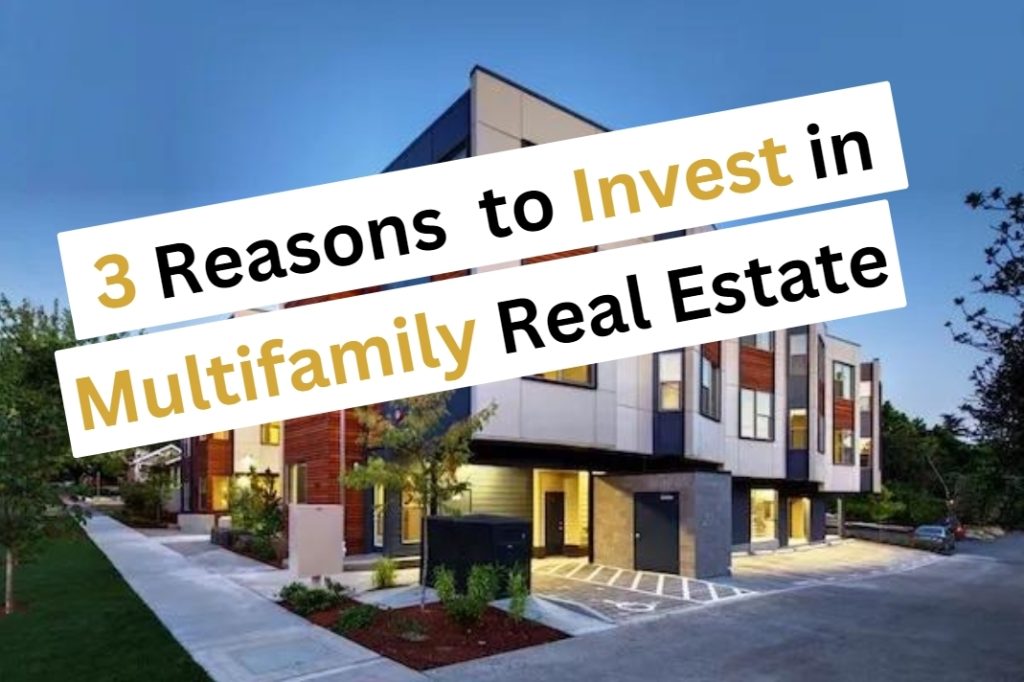Real estate can be an alternative for those unable to withstand the volatility of the stock market. It is also an option for investors who wish to take an active role in growing their capital rather than putting their money into a fund managed by someone else. One of the attractive reasons for real estate investing is that there is more than one strategy you can use.
Some investors purchase neglected properties to renovate and sell to new owners. Others choose multi-family properties to earn rental income. These have separate units, such as apartment buildings, condominiums, and homes with multiple apartments.
One of the most attractive (and obvious) reasons for investing in this type of real estate is the greater potential for passive rental income. Furthermore, these properties can be easier to finance, allow you to grow your portfolio in a short amount of time, and let you oversee them by hiring a property management company.
Key Takeaways
- Owning rental real estate can be a smart way to diversify your investment portfolio and generate a steady income.
- A multi-family property can multiply your income with only incremental added cost.
- Multi-family rentals are typically easier to finance, compound returns more quickly, and tend to benefit from economies of scale.
Investing in Multi-Family Properties
Investing in rental property is a great way for investors to earn an additional source of monthly income. It also allows them to invest in properties whose values appreciate steadily over time. There are two types of properties that one can invest in when it comes to residential real estate: single- and multi-family.
As the name implies, single-family properties are residential buildings with only one available unit to rent. Multi-family properties, on the other hand, have more than one rentable space. They come in different shapes and sizes, including:
- Apartment buildings and complexes
- Condo complexes
- Mixed-use properties, which combine residential and commercial units
- Low-income housing
- Retirement homes
- Duplexes and triplexes1
While there are fewer barriers to entry when building a portfolio of small homes, there are several advantages to investing in large residential complexes. Here are three reasons to consider investing in multi-family real estate as opposed to single-unit rental properties.
1. More Expensive, But a Lot Easier to Finance
Real estate can be an expensive venture. While the cost to purchase a single-family home can be daunting, buying a multi-family property can be even heavier. The purchase price depends on the type of property and can run into the millions for complexes with many units—especially if it’s located in a highly desirable location.
But there are other things you have to consider before making the purchase. Not only do you have to consider the purchase price and housing trends, but you’ll also have to take into account rules about zoning and vacancy rates. Other key considerations include the cost of repairs and expenses like utilities, which can be high.2
Financing is another consideration. If your property comes with five or more units, you’ll have to secure a commercial property loan from a lender.3 Some lenders will require documents, including rent rolls and a letter of intent. You’ll also have to consent to a credit check with a minimum credit score of 640. And having a low debt-to-income (DTI) ratio and high cash reserves can make you a more attractive borrower.4
Multi-family real estate consistently generates a strong cash flow. This remains even if a few tenants are late with the rent or the property has a handful of vacancies. A 10-unit property with one vacancy would only be 10% unoccupied. But if a tenant moves out of a single-family home, it becomes 100% vacant until it’s rented again. This all equates to a less risky investment for a lender and can also result in a more competitive interest rate for the property owner.
2. Growing a Portfolio Takes Less Time
Multi-family real estate is also very suitable for investors who wish to build a relatively large portfolio of rental units. Acquiring a 20-unit apartment building is a lot easier and much more time-efficient than purchasing 20 different single-family homes.
With the latter option, you would need to work back and forth with 20 different sellers and conduct home inspections on 20 houses that are each located at a different address. And in some cases, this option would also require you to take out 20 separate loans for each property. You’d be better off and avoid all the headaches by simply purchasing one property with 20 units.
3. You’re in a Position in Which Property Management Makes Financial Sense
Some real estate investors don’t enjoy managing their properties. There’s the process of dealing with tenants (with different personalities), collecting rent, taking care of repairs, and paying the bills. Rather than do all of this themselves, they may hire a property management company to handle the day-to-day operations.
A property manager is typically paid a percentage of the monthly income that a property generates. Their duties may include:
- Finding and screening tenants
- Collecting rent payments
- Maintaining the property, including overseeing repairs and paying expenses
- Handling compliance and regulation issues
- Taking care of evictions6
Using an external property manager may not make sense for investors who own one or two single-family homes. It may not be a financially sound decision because of their small portfolio. The amount of money that multi-family properties produce each month gives their owners room to take advantage of property management services without the need to significantly cut into their margins.
What’s the 50% Rule of Multi-Family Investing?
The 50% rule is considered a guide to determine the profitability for multi-family investing. According to the rule, property owners should divide the total income they generate from rent payments in half. This amount should be used to pay for any expenses related to the property while the other half can be set aside as profit.
How Do You Finance a Multi-Family Property?
Getting a loan for a multi-family property is similar to getting one for a single-family home. You will require a credit check and have a credit score of at least 640. There are also certain criteria that you must also meet, including meeting your potential lender’s debt-to-income ratio thresholds.4
Sage Real Estate. “Financing a Multifamily Property in 2022: Everything You Need to Know.”
You’ll probably also need an appraisal. Some lenders may require you to submit rent rolls to indicate how much income you expect to generate as well as a letter of intent.
What’s the Difference Between Single-Family and Multi-Family Investing?
Single-family properties come with single units while multi-family properties have separate units designed for multiple tenants. These include apartment complexes, condos, duplexes, and triplexes. Both provide a steady stream of rental income but multi-family properties offer the potential for greater income because of the number of units involved. And because there are more tenants, the risk drops significantly. On the downside, the costs for maintenance and repairs may be higher.
The Bottom Line
Much like stocks, real estate investing allows for one to be successful through several different strategies. One of the most popular ways to invest in real estate is to own a collection of rental properties. Properties that only have one residential rental unit are commonly referred to as single-family properties, while apartment complexes that have multiple rental units are known as multi-family properties.
There are many advantages to owning multi-family real estate. These include access to easier and better financing opportunities, the ability to quickly grow one’s rental property portfolio, and the luxury of hiring a property manager.
https://www.investopedia.com/articles/personal-finance/041216/3-reasons-invest-multifamily-real-estate.asp






